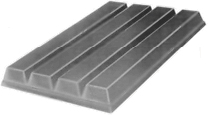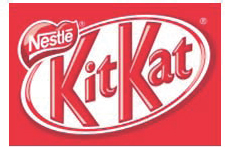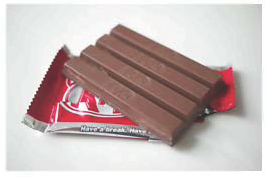Société Des Produits Nestlé SA v Cadbury UK Ltd
| Jurisdiction | England & Wales |
| Judge | Lord Justice Kitchin,Lord Justice Floyd,Sir Geoffrey Vos |
| Judgment Date | 17 May 2017 |
| Neutral Citation | [2017] EWCA Civ 358 |
| Docket Number | Case No: A3/2016/0539 |
| Court | Court of Appeal (Civil Division) |
[2017] EWCA Civ 358
THE CHANCELLOR OF THE HIGH COURT
Lord Justice Kitchin
and
Lord Justice Floyd
Case No: A3/2016/0539
IN THE COURT OF APPEAL (CIVIL DIVISION)
ON APPEAL FROM THE HIGH COURT OF JUSTICE
CHANCERY DIVISION (INTELLECTUAL PROPERTY)
THE HON MR JUSTICE ARNOLD
Royal Courts of Justice
Strand, London, WC2A 2LL
Michael Bloch QC and Simon Malynicz QC (instructed by CMS Cameron McKenna LLP) for the Appellant
Thomas Mitcheson QC (instructed by Bristows LLP) for the Respondent
Hearing dates: 22/23 February 2017
Approved Judgment
Introduction
This is an appeal by Société des Produits Nestlé S.A. ("Nestlé") from the judgment of Arnold J given on 20 January 2016 ( [2016] EWHC 50 (Ch)) and his consequential order dismissing its appeal against the decision of Mr Allan James, the hearing officer acting for the Registrar of Trade Marks, dated 20 June 2013 (O/257/13).
The appeal concerns an application made by Nestlé on 8 July 2010 to register as a UK trade mark the three-dimensional sign shown below (the "Trade Mark") in respect of chocolate and various other goods in class 30:

The Trade Mark corresponds to the shape of the well-known four-finger product sold by Nestlé under the name Kit Kat in the United Kingdom save that it lacks the Kit Kat logo which is embossed onto each of the fingers of the actual product.
The design of the logo has not changed greatly over the years and in its current form looks like this:

Kit Kat has always been sold in packaging which bears the Kit Kat logo. For many years it was sold in two layers of packaging, an inner silver foil and an outer paper sleeve bearing the logo. More recently it has been sold in a single layer of packaging, again bearing the logo. In consequence, the product is not visible until the wrapping has been removed:

In addition to the four-finger Kit Kat, there is a two-finger version, but nothing turns on it for the purposes of this appeal.
The application was in due course opposed by the respondent, Cadbury UK Ltd ("Cadbury"), on various grounds including, so far as relevant to this appeal, that the Trade Mark lacked distinctive character and so registration was precluded by section 3(1)(b) of the Trade Marks Act 1994 ("the 1994 Act"), which gives effect to Article 3(1)(b) of European Parliament and Council Directive 2008/95/EC of 22 October 2008 ("the Directive"). In response, Nestlé relied upon the proviso to section 3(1) of the 1994 Act, which gives effect to Article 3(3) of the Directive, and contended that the Trade Mark had acquired a distinctive character as a result of the use which it had made of it prior to the application date.
The opposition was heard on 18 March 2013. In his decision given on 20 June 2013, the hearing officer held, so far as relevant, that the Trade Mark was devoid of inherent distinctive character save for cakes and pastries and that it had not acquired a distinctive character in relation to any of the other goods in respect of which registration was sought.
An appeal and cross-appeal against that decision came on for hearing before Arnold J in December 2013. In his judgment given on 17 January 2014 ( [2014] EWHC 16 (Ch)) (the "first judgment"), he held, so far as relevant, that the hearing officer was wrong to find that the Trade Mark was inherently distinctive in relation to cakes and pastries, and that, in relation to acquired distinctiveness, it was necessary to seek a preliminary ruling from the Court of Justice of the European Union ("the CJEU" or "the Court") in order to determine the appeals. He in fact referred three questions for a preliminary ruling, only the first of which related to acquired distinctiveness. The other two concerned another ground of objection which has no bearing on the issues before us.
The CJEU delivered judgment on 16 September 2015 ( Case C-215/14). There was no dispute between the parties that, in light of that judgment, the registrability of the Trade Mark turned on the issue of its acquired distinctiveness. They were not agreed, however, as to the effect of the Court's answer to the first question or the impact of that answer upon the outcome of Nestlé's appeal.
The appeal was therefore restored for hearing before Arnold J on 13 January 2016. In his judgment given on 20 January 2016 (the "second judgment"), he held that the hearing officer had not erred as a matter of law in addressing the issue of acquired distinctiveness and that the conclusion he reached was not only open to him on the evidence before him but was also correct. He therefore dismissed the appeal.
Upon this further appeal, Nestlé contends, in broad outline, that a substantial proportion of the relevant consumers, when presented with the three-dimensional shape the subject of the Trade Mark, identified it as a Kit Kat. Further, when those consumers identified the shape as a Kit Kat, they meant a specific product from a single source. This means that the Trade Mark is and was at the relevant date distinctive within the meaning of Article 3(3) of the Directive and the hearing officer ought so to have held. However, Nestlé continues, the hearing officer and the judge considered that something more was required, namely that consumers had come to rely on the Trade Mark, either when purchasing the goods or afterwards when checking their purchases. There was no basis in law for imposing this further requirement and it was inconsistent with the decision of the CJEU in this case.
Cadbury responds that the hearing officer and the judge asked themselves the correct question, namely whether consumers had come to perceive the Trade Mark as an indication of origin. Cadbury succeeded in the opposition because the evidence only established that consumers had come to associate the Trade Mark with Nestlé and this did not amount to acquired distinctiveness within the meaning of Article 3(3) of the Directive.
I will address these rival contentions and the further submissions advanced by the parties in due course but first must say a little about the legal framework, the decision of the hearing officer, the first judgment, the decision of the CJEU in this case and the second judgment.
The legal framework
Article 3 of the Directive provides, so far as relevant:
"Article 3
Grounds for refusal or invalidity
1. The following shall not be registered or, if registered, shall be liable to be declared invalid:
…
(b) trade marks which are devoid of any distinctive character;
…
3. A trade mark shall not be refused registration or be declared invalid in accordance with paragraph 1(b), … if, before the date of application for registration and following the use which has been made of it, it has acquired a distinctive character. …"
The approach to be adopted in assessing whether a mark has acquired a distinctive character within the meaning of Article 3(3) of the Directive has been considered by the CJEU in a number of cases over the years. For the purposes of this appeal, I can begin with the general guidance the Court gave in Joined Cases C-108/97 and C-109/97 Windsurfing Chiemsee Produktions—und Vertriebs GmbH v Boots—und Segelzubehör Walter Huber [1999] ECR I-2779 at [51] to [54], all of which is relevant to this appeal:
"51 In assessing the distinctive character of a mark in respect of which registration has been applied for, the following may also be taken into account: the market share held by the mark; how intensive, geographically widespread and long-standing use of the mark has been; the amount invested by the undertaking in promoting the mark; the proportion of the relevant class of persons who, because of the mark, identify goods as originating from a particular undertaking; and statements from chambers of commerce and industry or other trade and professional associations.
52 If, on the basis of those factors, the competent authority finds that the relevant class of persons, or at least a significant proportion thereof, identify goods as originating from a particular undertaking because of the trade mark, it must hold that the requirement for registering the mark laid down in Article 3(3) of the Directive is satisfied. However, the circumstances in which that requirement may be regarded as satisfied cannot be shown to exist solely by reference to general, abstract data such as predetermined percentages.
53 As regards the method to be used to assess the distinctive character of a mark in respect of which registration is applied for, Community law does not preclude the competent authority, where it has particular difficulty in that connection, from having recourse, under the conditions laid down by its own national law, to an opinion poll as guidance for its judgment (see, to that effect, Case C-210/96 Gut Springenheide and Tusky [1998] ECR I-4657, paragraph 37).
54 In the light of the foregoing, the answer to the questions on the first sentence of Article 3(3) of the Directive must be that Article 3(3) is to be interpreted as meaning that:
• a trade mark acquires distinctive character following the use which has been made of it where the mark has come to identify the product in respect of which registration is applied for as originating from a particular undertaking and thus to distinguish that product from goods of other undertakings;
•…
• in determining whether a trade mark has acquired distinctive character following the use which has been made of it, the competent authority must make an overall assessment of the evidence that the mark has come to identify the product concerned as originating from a particular undertaking and thus to distinguish that product from goods of other undertakings;
• if the competent authority finds that a significant proportion of the...
To continue reading
Request your trial-
Lidl Great Britain Ltd v Tesco Stores Ltd
...Nestle SA v Cadbury UK Ltd [2016] EWHC 50 (Ch) per Arnold J at [68], and on appeal Societe Des Produits Nestle SA v Cadbury UK Ltd [2017] EWCA Civ 358 per Kitchin LJ at [80]–[87] and [101], Floyd LJ at [102]–[110] and Sir Geoffrey Vos at [123]). Tesco accepts that the YouGov Survey establ......
-
Decision Nº O/105/22 from Intellectual Property Office - (Trade market), 8 February 2022
...mark could not have acquired a distinctive character through such use: see Société des Produits Nestlé SA v Cadbury UK Limited, [2017] EWCA Civ 358, paragraph 19. However, as a matter of fact, it makes it harder for the applicant to show that an inherently non-distinctive mark has acquired ......
-
W3 Ltd v Easygroup Ltd
...from a particular company.” 165 This ruling was considered by the Court of Appeal in Société des Produits Nestlé SA v Cadbury UK Ltd [2017] EWCA Civ 358, [2017] Bus LR 1832 (“ Nestlé v Cadbury II”), where Kitchin LJ (with whom Sir Geoffrey Vos C and Floyd LJ agreed) said at [52] that “the m......
-
Luen Fat Metal and Plastic Manufactory Ltd v Jacobs & Turner Ltd trading as Trespass
...thereof. Legal context 42 The Court of Appeal set out the approach to be adopted for testing acquired distinctiveness in Société des Produits Nestlé SA v Cadbury UK [2017] EWCA Civ 358, [2017] FSR 34, the “Kit Kat 4 fingers” case, at [16]–[22] (per Kitchin LJ, with whom Floyd LJ and Vos C ......
-
Choc it out: Lindt’s golden bunny granted trade mark recognition in the EU
...the shape of the chocolate bar lacked distinctiveness as it could not be relied upon by consumers to signify the origin of the goods ([2017] EWCA Civ 358). For more information, please see our previous global publication on this matter at the following link: https://www.nortonrosefulbright.......
-
DISENTANGLING FUNCTIONALITY, DISTINCTIVENESS AND USE IN AUSTRALIAN TRADE MARK LAW.
...view has become entrenched in the UK, even after a reference to the Court of Justice: Societe des Produits Nestle SA v Cadbury UK Ltd [2018] 2 All ER 39. It has also been adopted by the Singapore Court of Appeal: Societe des Produits Nestle SA v Petra Foods Ltd [2017] 1 SLR (112) For recent......

